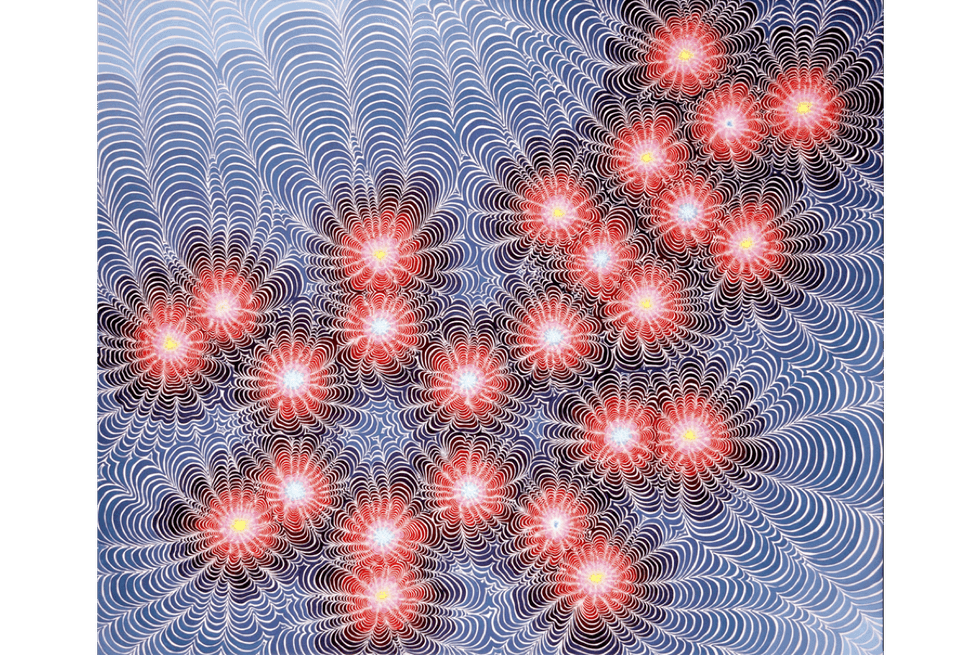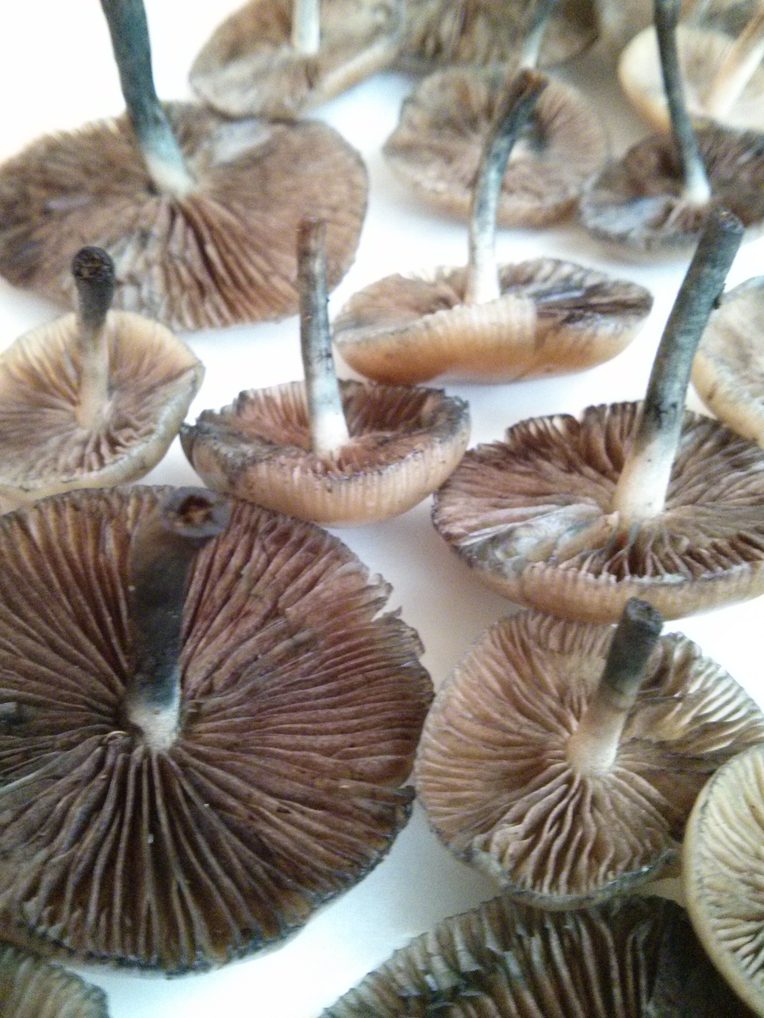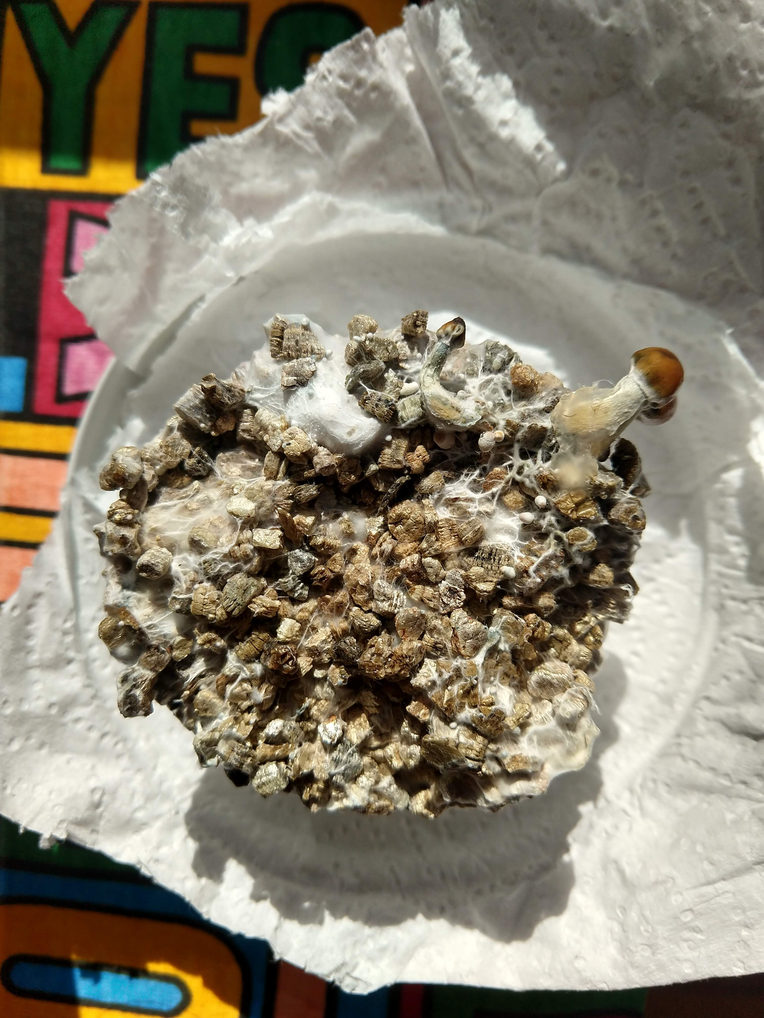The Wild and Un/natural Science of Psilocybin Mushrooms in North America
From the Series: The Psychedelic Revival
From the Series: The Psychedelic Revival

This past year a wave of local and state campaigns have cropped up across the United States to decriminalize psilocybin mushrooms for personal use. Three of these campaigns (Denver, Colorado; Oakland, California; and Santa Cruz, California) have been successful. The movement is a response to the emergence of psilocybin as one of the most promising compounds in the contemporary psychedelic revival, leading the charge for federal rescheduling and the normalization of psychedelic therapy. Psilocybin and psilocin (its bioactive counterpart) were first isolated from hallucinatory mushrooms in 1958 by Albert Hofmann, the Swiss chemist best known for (accidentally) inventing LSD.1 Hofmann succeeded in synthesizing the compound a few years later and patented the process (with Franz Troxler) in 1963. Today, several start-ups have moved into “the psilocybin space” to patent new methods of psilocybin synthesis, including bioengineering yeast and E. coli to produce the compound. The race to invent and patent faster ways to mass-produce pharmaceutical grade psilocybin is on.

The movement to decriminalize psychedelics, in contrast, is grounded in political critiques of the health care system, the pharmaceutical industry, and drug policy, and the ills of industrial modernity more broadly—settler colonialism, capitalist exploitation, ecological destruction, and so on. Supporters stress the accessibility of foraged and homegrown psychedelics and their traditional consumption in precolonial cultures. And it is true, as naturally occurring organisms, these psilocybin production processes—i.e., the mushrooms themselves—cannot be copyrighted.2 The naturalness of psychedelic mushrooms is counterposed to their medicalized and synthesized analogs. Such rhetoric often mobilizes a familiar conflation of naturalness, indigeneity, and ecological redemption while attempting to align present-day consumption practices with premodern ones.
The actual history and culture of psilocybin mushrooms in the United States is one that departs from and complicates this popular discourse of naturalness, and contemporary techniques for growing mushrooms, now being taught widely in this wake of decriminalization, are products of that history. Since the 1970s, driven by a desire to cultivate and forage psilocybin-active mushrooms, psychedelic enthusiasts developed a unique technoscientific practice, fostering several not-quite-wild, not-quite-domesticated species across the American landscape. Their practices were shaped by ecological values and a collaborative multispecies ethos that promiscuously adapted modern lab techniques. The history and present of psilocybin mushrooms in North America is a model of Latourian nature-culture: it undermines the binary on which constructions of naturalness rely. It also provides an opening for popular iterations of the nature-culture concept and the co-creation of human and nonhuman life.

Psilocybin mushrooms were first cultivated indoors beginning in the mid-1970s. Although psilocybin and psilocin were criminalized in 1970, in most states the possession of spores and mycelia of psilocybin-active species remained legal. An underground industry of mail-order Psilocybe spores sprouted up; would-be psychonauts simply had to learn to cultivate mushrooms from spores. Psilocybe cubensis became the model organism for underground cultivation. A tropical species originally found in Cuba (hence the name) but also common in Central and South America, P. cubensis is easily grown in controlled settings and is relatively potent. Since the 1990s, these cultivation methods were codified and refined through countless tweaks that were shared online by mostly pseudonymous users. The practice today remains a kind of intuitive artisan bricolage, with well-known “best practices” drawn from this technical canon.
During this same period, amateur mycologists in North America began practicing a form of guerrilla wild-crafting of native psilocybin-species across rural, urban, and periurban landscapes. As Anna Tsing (2005) has shown us, mushrooms thrive at the edges, in disturbed habitat, following the worlds we (humans) create. This is especially true for psilocybin-active species. Cultivators found ways to situate hybrid practices within this interstitial realm. Soon after psilocybin-active species were first publicized outside of Oaxaca, in 1957, professional mycologists began finding them across the United States and Canada.3 These species spread rapidly in urban and periurban areas throughout the 1970s as people picked and transported them, spreading their spores to new habitat. Psilocybe cyanenscens, difficult to cultivate indoors but more potent than P. cubensis, became a “weed mushroom,” growing in the ornamental wood chips used in landscaped flower beds around the Pacific Northwest.4
By the 1980s, amateur mycologists had begun using this human–fungal dynamic to their advantage in cultivating native species and in conceptualizing cultivation in general. In The Mushroom Cultivator, the first in-depth cultivation manual for a general audience, Jeff Chilton and Paul Stamets (1983) describe a method they call “Natural Culture”—essentially outdoor wild-crafting—that forgoes the quest for a totally controlled environment (as in the case of indoor cultivation) and instead enlists multiple (“natural” or “entropic”) forces to create a conducive environment (Chilton and Stamets 1983). The phrase playfully evokes both mycological terminology and “natural lifestyles” of the era but its resonance with later multispecies theorists could not be more apt.

These methods instilled the concept of a human–fungal “alliance” that is pervasive among DIY mycologists today. As fungi exploit the affordance of our animal motility, we exploit the fungal affordances of illegibility, ambiguity, and dissimulation. Cultivators took cues from fungal life and its airborne strategy of random scattering. Fungal logics of dispersion, expansion, and invisibility were mimicked as mycophiles made themselves vectors through spore-printing their clothes or burying wild psilocybes in public parks. The modern nature-culture binary acts as cover for guerrilla inoculators: was it the person or the fungus that created that mushroom patch? Such loose techniques carried over into makeshift home labs where familiarity and attunement to fungal life aided in new techniques. “Think like a mushroom” was an adage I heard often during my field work with DIY cultivators.
In the context of American psychedelia, the popular discourse of naturalness (coupled with “entheogens”) is often meant to invoke a kind of prelapsarian spiritual relationship with nonhuman life. In Oakland, since decriminalization in June 2019, workshops have been swarmed by aspiring cultivators. The practices they are learning, like the mushrooms they’ll produce, are quintessentially hybrid. They illustrate an approach to nonhuman life that is as much about the vernacularization of modern science as it is a critique or rejection of industrial modernity.
1. Hofmann worked from fungal samples sent to him (from the Sierra Mazateca region) by R. Gordon Wasson, the famous banker-turned-amateur-enthnomycologist who first publicized the mushrooms’ existence in an extensive article in Life magazine in 1957. Wasson was purportedly the first outsider to consume the mushrooms in a traditional healing ceremony (see Letcher 2008).
2. Diamond v. Chakrabarty, 447 U.S. 303 (1980).
3. And eventually around the world.
4. Paul Stamets (1996) notes wryly, in his field guide to Psilocybes, that the mushroom is common in the wood chips outside the King County Courthouse.
Chilton, Jeff and Paul Stamets. 1983. The Mushroom Cultivator: A Practical Guide to Growing Mushrooms at Home. Olympia, Wash.: Agarikon.
Letcher, Andy. 2008. Shroom: A Cultural History of the Magic Mushroom. New York: Harper Perennial.
Stamets, Paul. 1996. Psilocybin Mushrooms of the World: An Identification Guide. Berkeley: Ten Speed.
Tsing, Anna Lowenhaupt. 2015. The Mushroom at the End of the World: On the Possibility of Life in Capitalist Ruins. Princeton, N.J.: Princeton University Press.